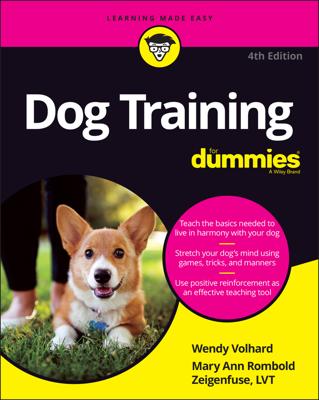Communicating to your puppy is like teaching English as a second language. Language is an odd medium for your puppy to understand; she’s naturally programmed to communicate through body postures. That said, you can teach her to respond to commands if you’re patient, positive, and proactive.
The power of positive reinforcement
Giving a puppy all your attention when she’s naughty and ignoring her when she’s well behaved is a good way to train your dog to act up. Puppies love attention! And like kids, they don’t care if the attention is negative or positive. Shouting, pushing, and grabbing isn’t going to discourage a puppy — it’s interpreted as confrontational play and makes a puppy more reactive, not less.
When encouraging your puppy’s good behavior or cooperation, use a blend of praise, toys, and treats. If your puppy gets excited over food rewards, use them to encourage active behaviors like “Come” and leash walking. Use calming praise and loving attention to reinforce stillness, such as sitting still or lying on a mat.
Encourage more than you discourage
Discouraging your puppy when she’s engaged in bad behavior communicates the wrong message to her. Dogs often interpret negative attention as confrontational play: “You’re animated, you’re loud, and you’re fierce. Let’s play rough!”
If you want a puppy who cooperates, you have to give her a lot of opportunities to behave and praise her for doing so. Here is a quick list of commands you can teach her and positive ways to condition a lifetime of good behavior:
Play ball with your puppy as you teach her the word “Ball.” Praise her for grabbing the ball — worry about the complicated game of fetching later. If your puppy knows the word “Ball,” you can say it during greetings to distract her from jumping.
Teach your puppy to be alert to the sound of a treat cup. Shake the cup and encourage your puppy to “Sit” before offering the reward. Now you have a clever way to encourage “Come” when your puppy is feeling mischievous and to instill proper greeting manners.
Investigate conditioning collars and harnesses and use treats and toys to lure your puppy as you teach her to walk at your side.
Teach your puppy English as a second language
Your puppy is listening to you all the time, absorbing everything going on around her at a rate never to be equaled again in her lifetime. Young and impressionable, she looks to others to learn how to handle new situations. But she can’t really understand what you’re teaching her until she learns English as a second language.
When your puppy looks to you, she’s saying “What next?” Answer her initially with body cues and physical directions, gradually pairing words with your routines. The more time you spend helping your puppy identify daily routines with words, the more she’ll tune into your directions and listen to you. Walk your puppy through activities and simply pair words with the routines. Rally everyone involved in team puppy to direct her with the same familiar words and routines.
The following table lists five important routines your puppy should know, pairing each one with a command to help your puppy link each routine with a specific action.
| Word Cue | Routine |
|---|---|
| “Outside” or “Papers” | Designate a footpath to your puppy’s bathroom area. Guide your puppy to her area as you repeat a direction like “Outside” or “Papers.” |
| “Bedtime” | Say this direction as you calmly lead your puppy into her crate or quiet room. If your puppy resists you, lure her with a toy or treat or use a leash to lead her. Avoid looking at her or getting cross. |
| “Car” | Each time you lead your dog to the car, identify the outing with “Car” and guide your puppy on leash, especially if the area is unconfined. |
| “Upstairs” and “Downstairs” | When you’re leading your puppy up a flight of steps, say “Upstairs.” When descending, say “Downstairs!” It seems pretty simple, but your puppy will feel empowered by your direction and her accomplishments. |
| “Inside” | Help your puppy identify how to navigate back into the den (your home) by saying this command and using treat cups, toys, or a leash as you walk to the door. Make a big to-do over her entrance, celebrating with a treat or quick game. |
When teaching your puppy, don’t stare at her or repeat yourself. Direct eye contact is unsettling, especially when paired with an unfamiliar direction.

